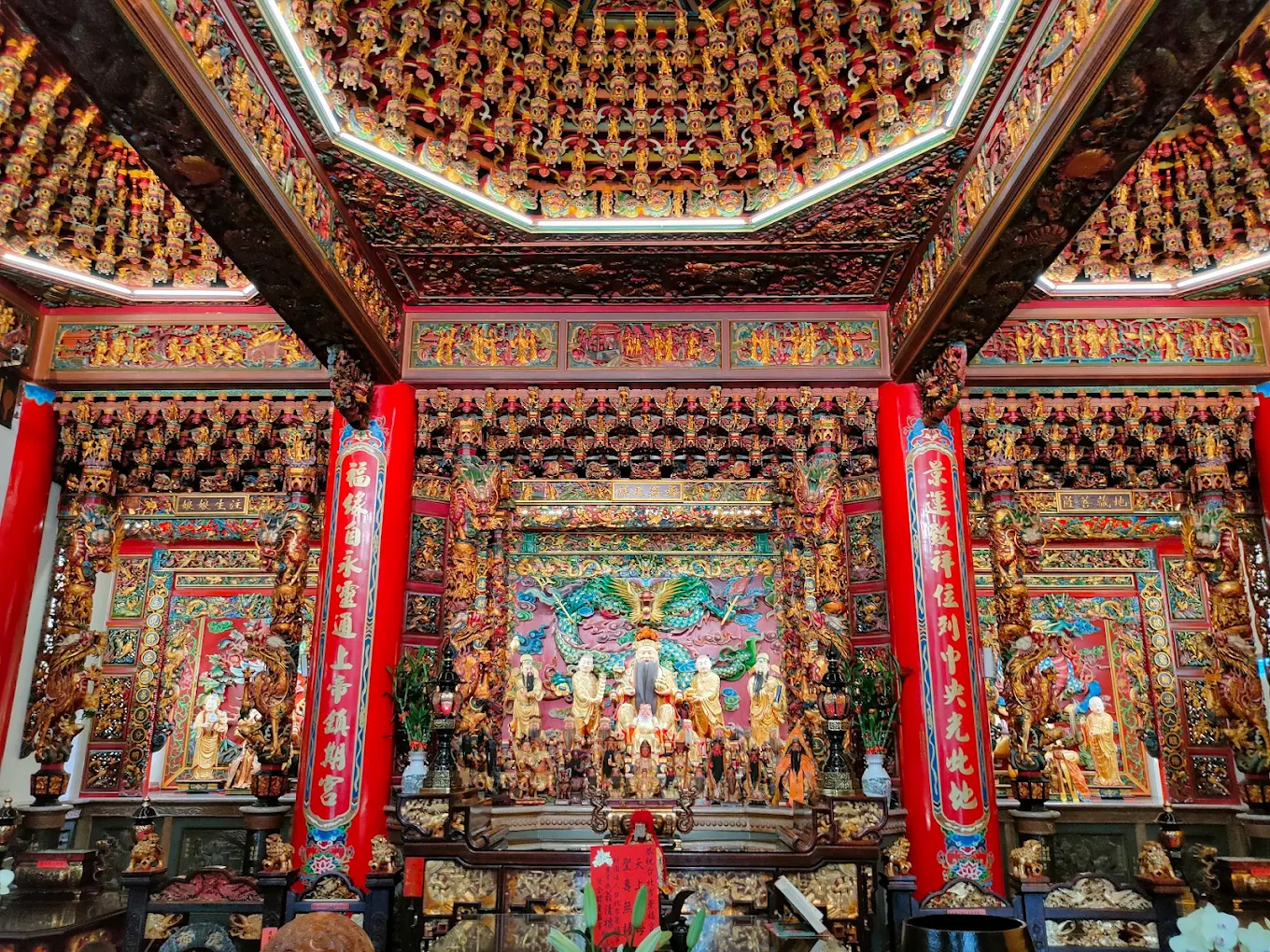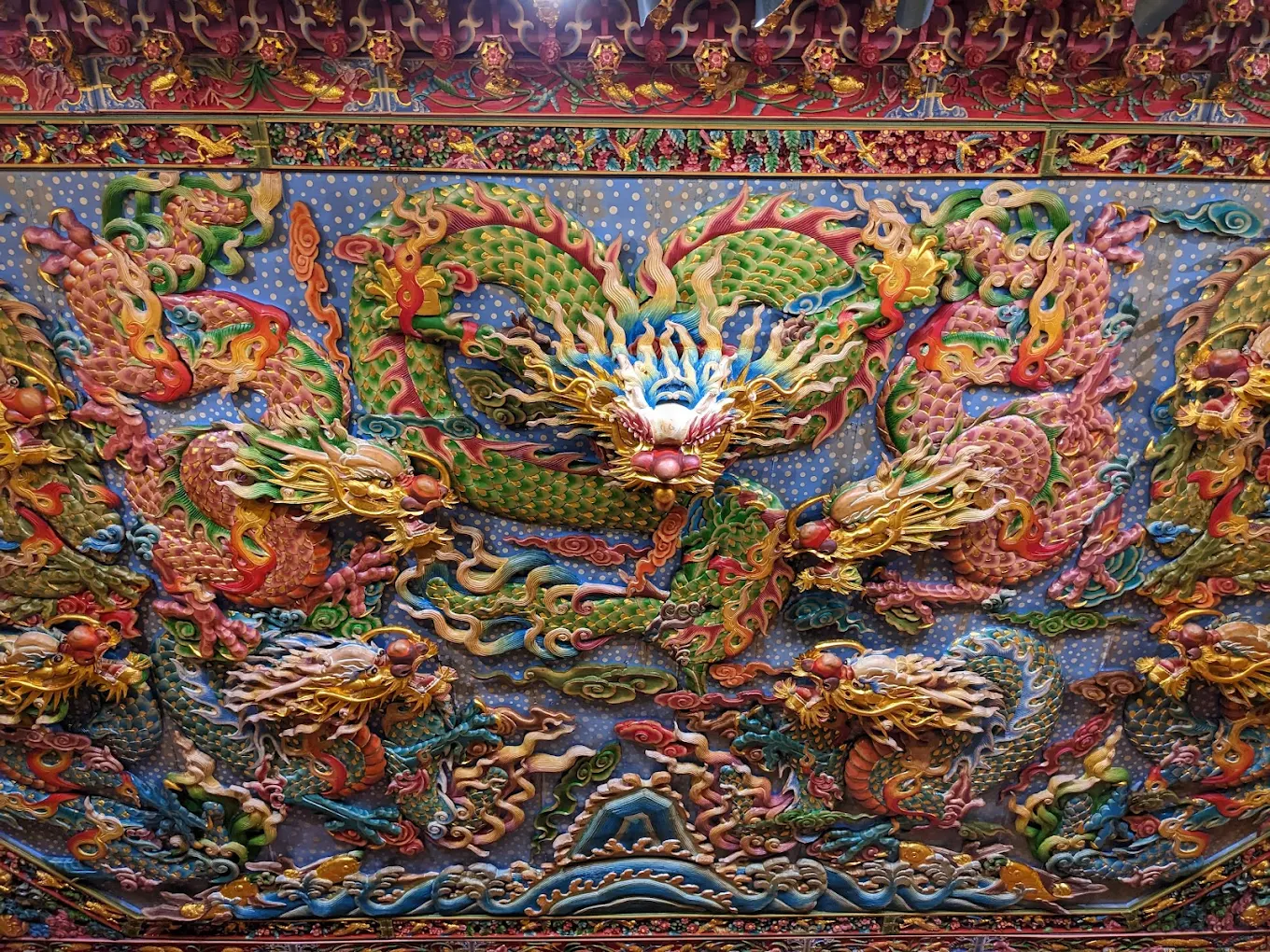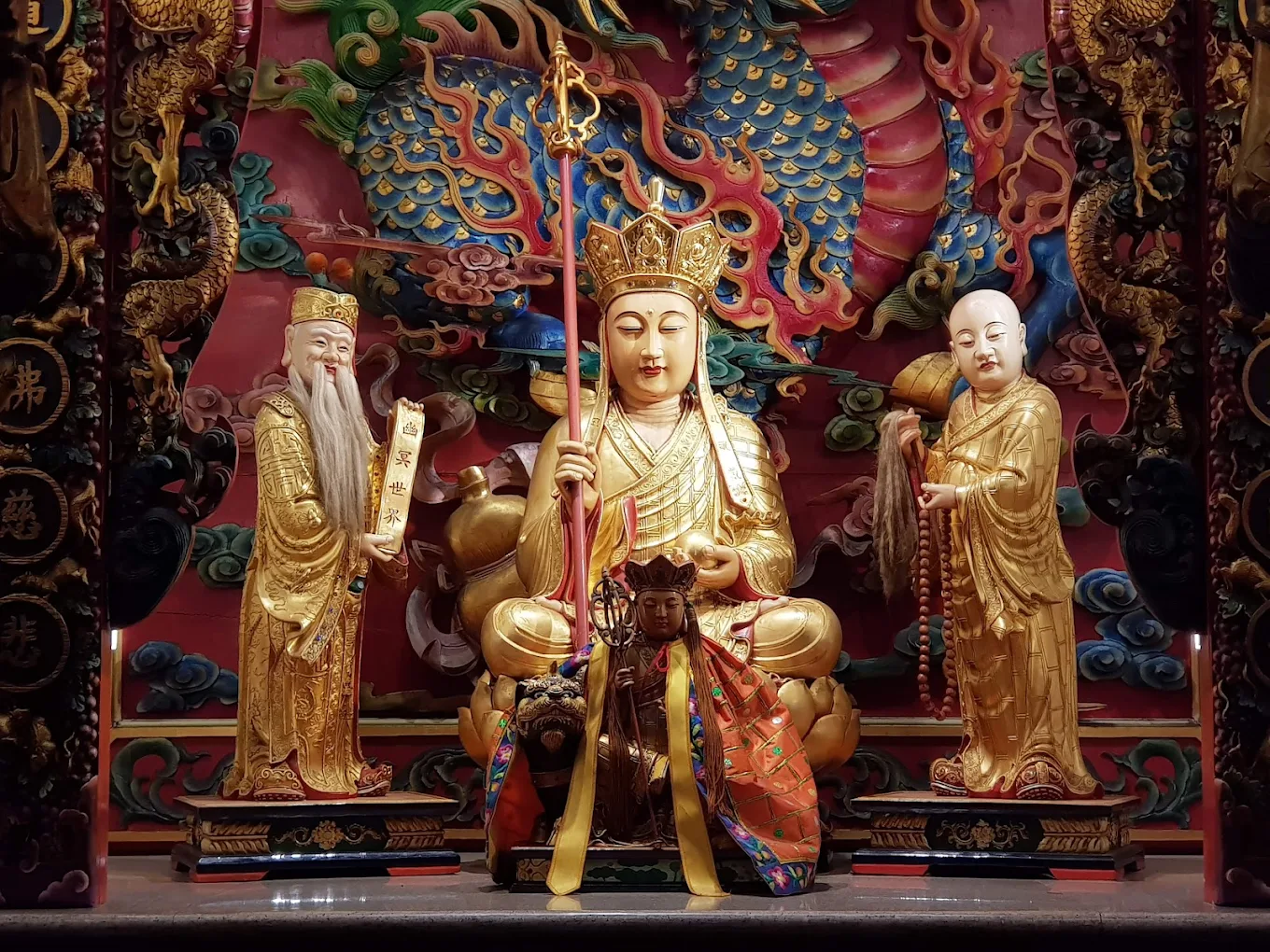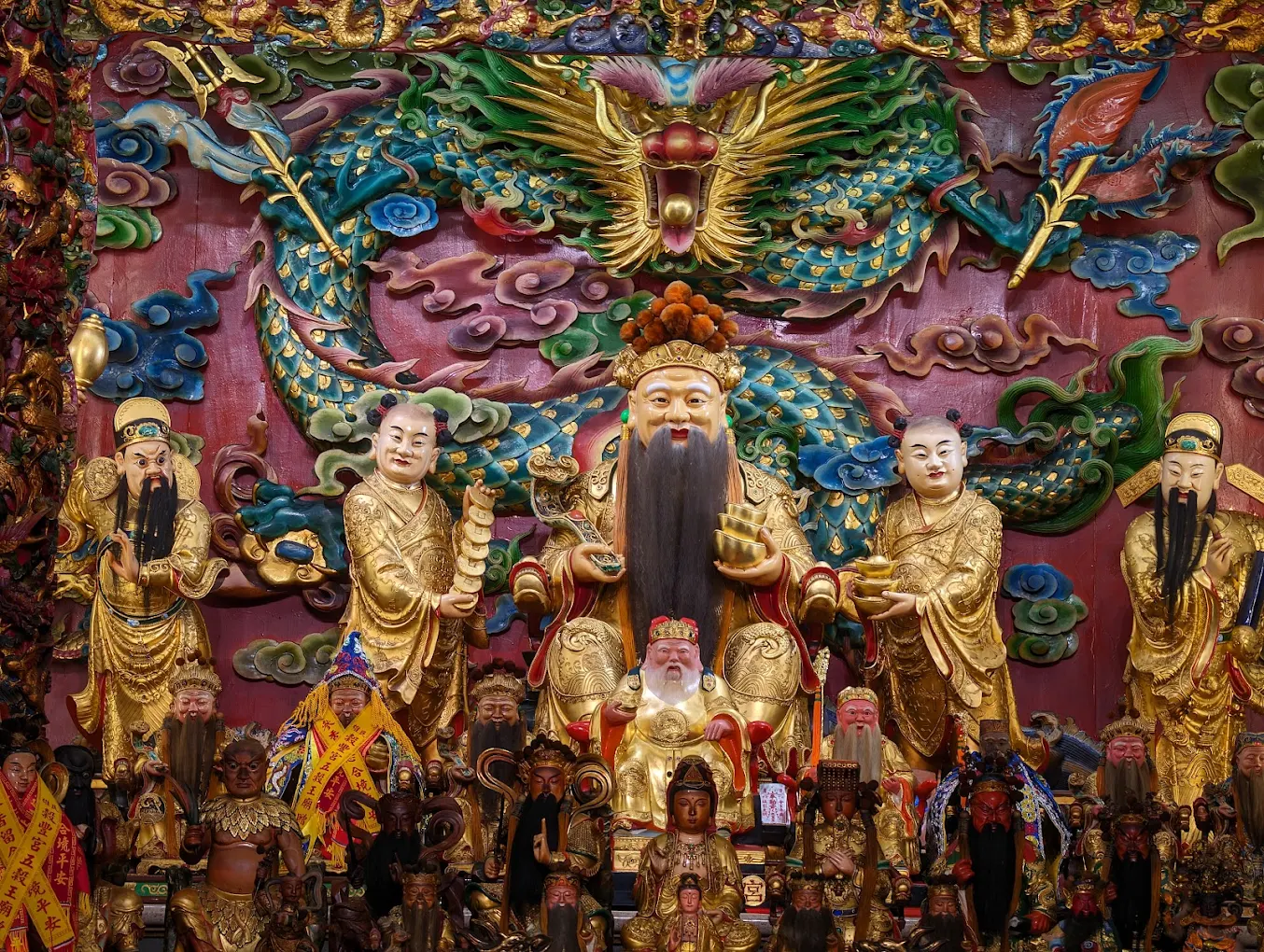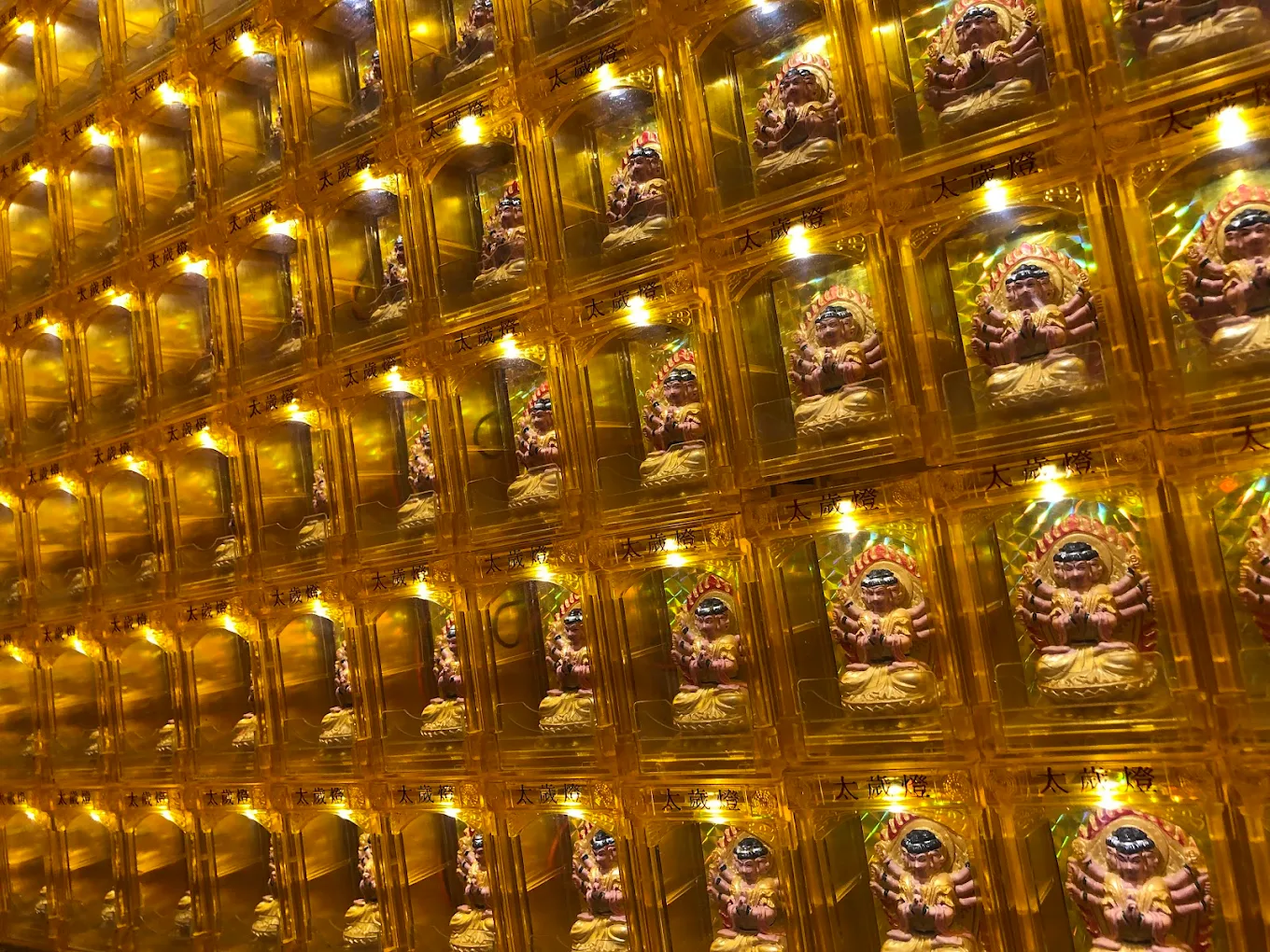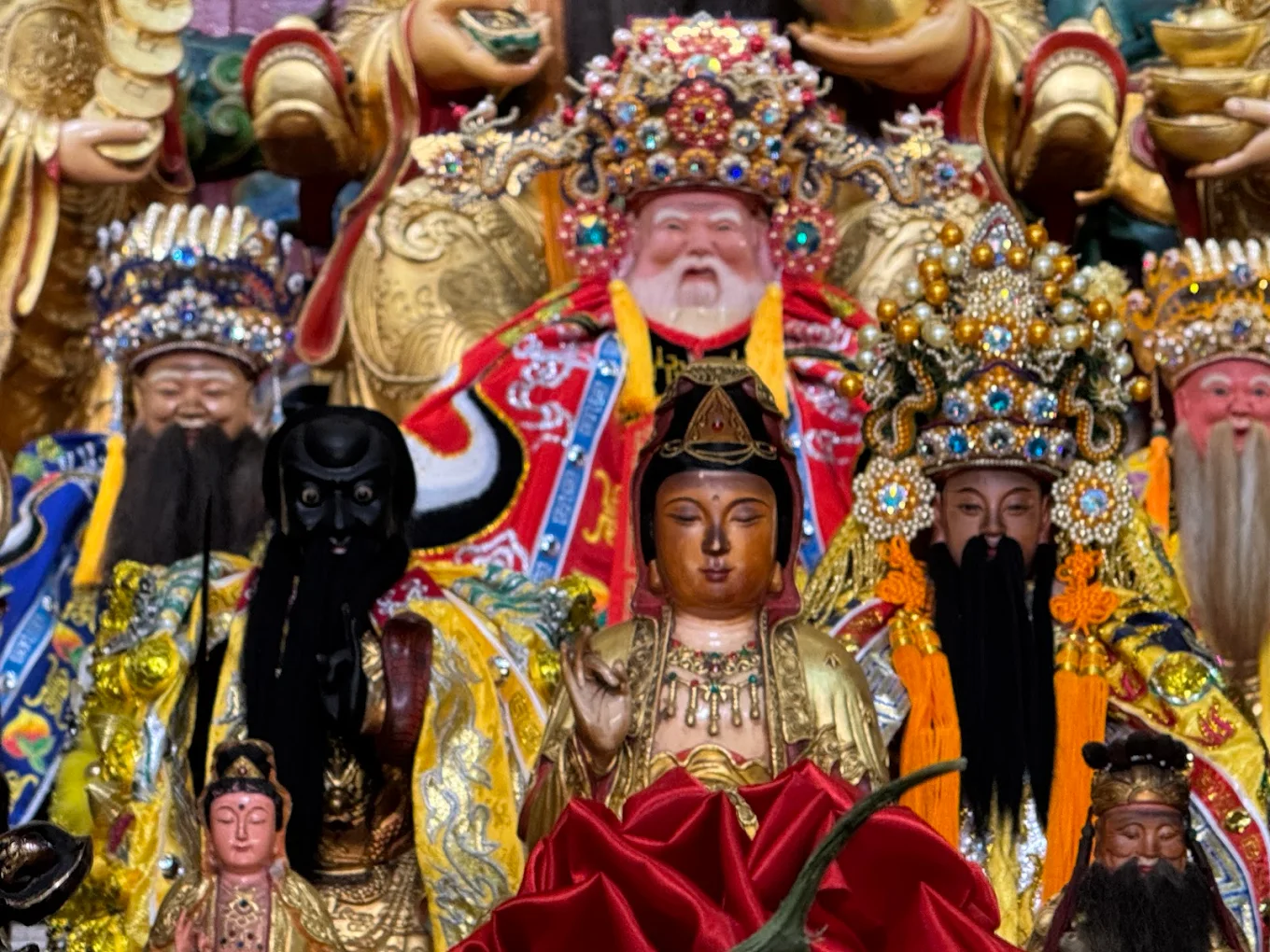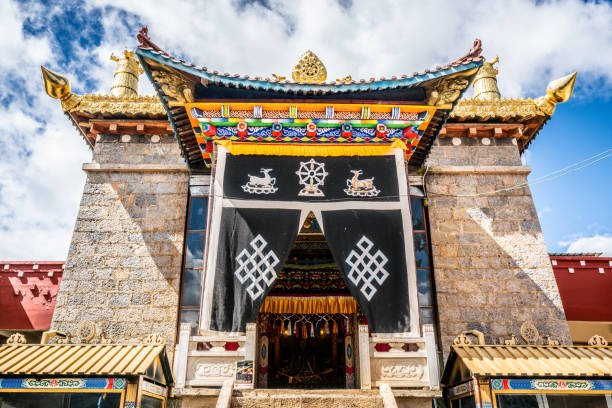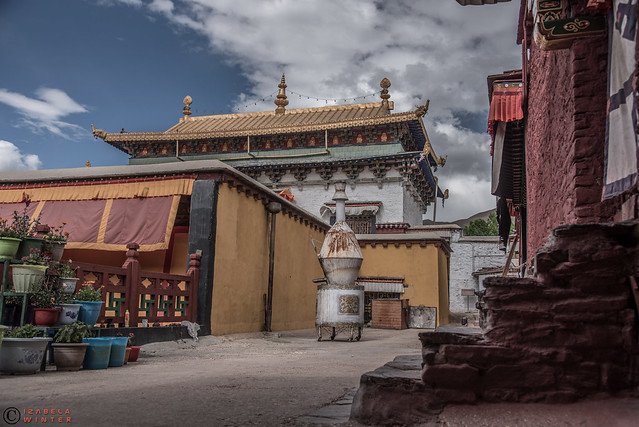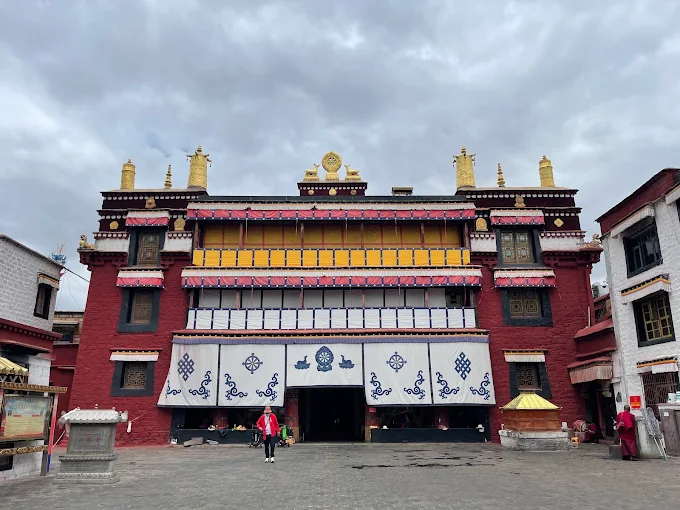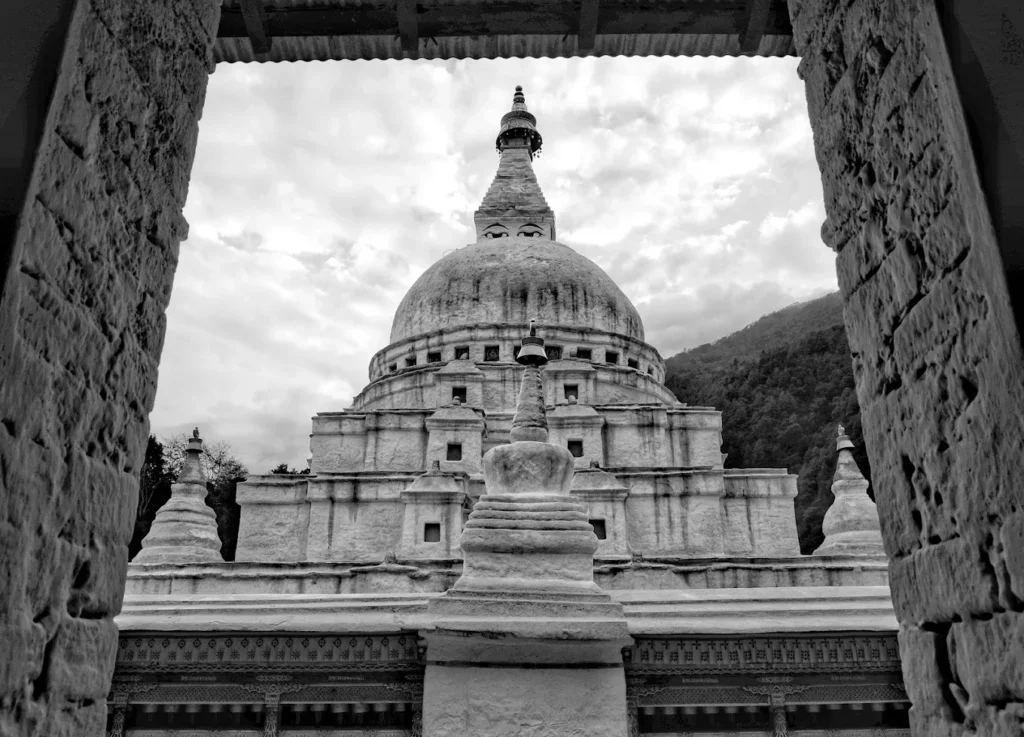Jingfu Temple: The Guardian of Zhongshan’s Earthly Devotion
Incense’s earthy scent wafts through stone reliefs, mingling with the soft hum of prayers in Jingfu Temple, nestled on Taipei’s Dehui Street. Founded in 1587 by local gentry, this five-story shrine honors Tudigong [Tǔdìgōng], the Earth God, a Taoist deity revered for protecting Zhongshan’s community and fostering prosperity. Rooted in Chinese agrarian traditions, Tudigong safeguards Qingguang Market’s vendors, his weathered stone statue radiating calm amid the district’s bustle. Unlike Xingtian Temple’s commercial vibrancy, Jingfu Temple’s modest courtyard, adorned with intricate wall ornaments, offers quiet reverence. A Zhongshan historical site, Jingfu Temple invites travelers to feel the pulse of Taiwanese Folk Religion, where market vendors’ whispers weave a tapestry of communal devotion.
Overview and Significance
Introduction to Jingfu Temple
Zhongshan’s shrine, established in 1587, embodies Taiwanese Folk Religion, blending Buddhist compassion, Taoist harmony, and folk reverence for the land. Its stone reliefs and tie to Qingguang Market set it apart from Xingtian Temple’s grandeur. Taiwanese Folk Religion fosters unity, guiding Zhongshan through rituals and charity. The temple draws cultural travelers to its earthy devotion. Visiting Jingfu Temple unveils Taipei’s community spirit.
Historical Journey
In 1587, Zhongshan gentry, including Ye Songlin and Qiu Wuyang, built a small Tudigong shrine in the rural “Niupuzi” area, as temple records note, seeking prosperity for their agrarian village. The 1940s saw Qingguang Market emerge as a post-war hub, with the temple expanding in 1951–1953 under Yan Canghai’s leadership, funded by vendors. Renovations in 1999 preserved its post-war artistry, reinforcing its historical status. Jingfu Temple history reflects Zhongshan’s transition from rural to urban resilience.
Cultural Significance
The Zhongyuan Festival (Hungry Ghost Festival) fills Dehui Street with lanterns, as vendor Ms. Chen recalls her mother’s 1970s offerings to appease spirits, uniting Zhongshan’s traders. Charity drives, aiding market workers, embody Tudigong’s care, while cultural workshops preserve local traditions. Jingfu Temple history shapes Zhongshan’s market identity.
Unique Legacy
Unlike Xingtian Temple’s commercial rites, Jingfu Temple’s link to Qingguang Market symbolizes community protection, its stone reliefs a hallmark of Taiwanese Folk Religion. Its syncretic worship mirrors Taipei’s pluralistic faith, centered on Tudigong’s guardianship.
Community and Global Impact
Zhongyuan Festival unites Zhongshan vendors, their chants echoing along Dehui Street. Cultural workshops draw local families, fostering pride across communities.
Historical Anecdotes
In 1960, oral histories recount Tudigong’s statue guiding vendors to safety during a flood, a miracle etched in Zhongshan’s memory, cementing his protective lore.
Social Role
The shrine strengthens Zhongshan’s bonds through festivals and charity, with incense-making workshops drawing families, their laughter mingling with incense haze.
Artistic Influence
Stone reliefs inspire Zhongshan’s artisans, their geometric patterns distinct from Xingtian’s ornate designs, shaping temple art traditions. Exploring Jingfu Temple rituals reveals this legacy.
- The shrine thrives in Zhongshan’s heart.
- Jingfu Temple history unveils community resilience.
- Visiting Jingfu Temple rituals offers cultural depth.
From Zhongshan gentry’s 1587 prayers, travelers step into the temple’s modest courtyard, where community history weaves sacred devotion.
Architectural and Spiritual Features
Iconic Design
The five-story post-war structure, framed by wooden lattices, glows under Taipei’s sun, its stone reliefs etched with geometric patterns. Simple columns, unlike Xingtian’s grandeur, reflect Zhongshan’s humility. Visiting Jingfu Temple unveils this modest design.
Worshipped Statues/Deities
Tudigong’s weathered stone statue, adorned with red cloth, radiates calm, its earthy scent blending with incense. As Zhongshan’s Earth God, Tudigong ensures prosperity, safeguarding Qingguang Market’s vendors, his gentle gaze guiding prayers. Rooted in Taoist agrarian traditions, he fosters community stability, complementing Buddhist compassion. His wife, Tupo, symbolizes fertility, joining him in the main hall. Jingfu Temple architecture centers on this sacred icon.
Signature Elements
Stone reliefs, etched with geometric forms, symbolize earthly protection, a hallmark of Tudigong’s sanctuary, distinct from Xingtian’s commercial vibrancy.
Materials and Techniques
Local artisan Chen Li’s 1999 stonework, with precise patterns, showcases post-war simplicity, preserved in temple records, reflecting Zhongshan’s craftsmanship.
Lesser-Known Features
Peach motifs on side walls, their faded hues symbolizing longevity, offer meditative calm, contrasting the courtyard’s quiet energy.
Preservation Efforts
Zhongshan vendors funded 1999 renovations, restoring reliefs with communal labor, ensuring the post-war legacy endures, a testament to devotion.
Environmental Integration
Feng shui aligns the courtyard with Zhongshan’s lanes, its small banyan tree fostering reflection amid market bustle, a natural haven.
- Visit Tudigong’s sanctuary for its post-war courtyard.
- Admire Jingfu Temple architecture in Taipei.
- Exploring Jingfu Temple rituals reveals artistry.
From the courtyard’s quiet glow, travelers join the shrine’s earthy rituals, where Zhongshan’s devotion pulses.
Rituals and Practices
Daily Sacred Rites
Devotees offer incense, its haze rising, and pray before Tudigong’s altar, seeking prosperity, their murmurs echoing in the main hall. Candles flicker softly, anchoring Zhongshan’s faith.
Festival Traditions
The Zhongyuan Festival fills Dehui Street with lanterns, as vendor Mr. Lin recalls his 1980s offerings to honor spirits, uniting the market. Joining Jingfu Temple rituals during this festival offers vibrancy.
Visitor Engagement
Travelers can join incense offerings, guided by volunteers, their hands tracing Zhongshan’s devotion, immersing in local faith. Visiting Jingfu Temple offers this ritual immersion.
Spiritual Community Roles
Lay practitioners (jūshì) lead chants blending Buddhist and Taoist hymns, while elders maintain altars, roles rooted in Taiwanese Folk Religion’s spirit.
Interfaith Connections
Tudigong’s worship weaves Buddhist compassion and Taoist balance, reflecting Taiwan’s pluralistic faith, unique to Jingfu Temple rituals.
- Experience the temple’s rituals firsthand.
- Join Jingfu Temple rituals during Zhongyuan Festival.
- Visiting Jingfu Temple offers cultural immersion.
From prayer-filled halls, travelers explore tips to engage with Zhongshan’s sacred legacy.
Visitor Information
Navigating to Jingfu Temple
Dehui Street’s bustling lanes lead to Tudigong’s sanctuary, a 10-minute walk from Zhongshan MRT Station, with Qingguang Market’s savory aromas nearby, a landmark in Taipei’s heart.
Address of Jingfu Temple
No. 11, Dehui St, Zhongshan District, Taipei City, Taiwan 10491.
Visiting Hours and Etiquette
Open 6 AM–8 PM, visitors should wear modest clothing, remove shoes in the main hall, and avoid photography during prayers, respecting Taiwanese Folk Religion customs, as signage advises.
Transport Options
Take the MRT to Zhongshan Station, a 10-minute walk via Zhongshan North Road, or buses (208, 246) to Jingfu Temple stop, weaving through vibrant markets.
Cultural Immersion Opportunities
Join Zhongyuan Festival workshops, crafting paper lanterns with locals like Ms. Chen, whose family offered prayers since the 1960s, a hands-on link to Zhongshan’s heritage.
Photography Tips
Capture stone reliefs at dusk, low angles highlighting their texture, while respecting worshippers’ privacy, avoiding flashes in the main hall.
- Visit the temple via Taipei MRT.
- Explore Jingfu Temple for festival workshops.
- Navigate to Jingfu Temple in Taipei.
From offering incense in Zhongshan’s vibrant lanes, travelers explore the shrine’s philosophical depth.
Cultural and Spiritual Insights
Religious Philosophy
Taiwanese Folk Religion at Tudigong’s sanctuary blends Buddhist compassion with Taoist balance, fostering community unity. Tudigong’s guardianship ensures prosperity, guiding Zhongshan’s ethics through stability and care. This syncretism, rooted in Taiwanese values, shapes Taipei’s market identity via rituals like Zhongyuan Festival. The temple’s philosophy grounds devotees in shared values. Visiting Jingfu Temple unveils this depth.
Cultural Narratives
Legends of Tudigong sparing Zhongshan from a 1960s flood inspire devotion, as elder Mr. Wu recounts his father’s tale of a protected market stall, cementing his protective lore.
Modern Cultural Connections
Zhongyuan Festival posts on social media, tagged #JingfuTemple, draw younger devotees, linking Zhongshan’s heritage to Taipei’s digital culture.
- Discover the temple’s philosophy.
- Explore Jingfu Temple narratives.
- Visiting Jingfu Temple connects to modern culture.
From Zhongshan’s philosophical depths, travelers heed the call to explore Tudigong’s vibrant legacy.
Why You Have to Visit
Stone reliefs glow under incense haze in Zhongshan’s modest courtyard, a beacon of earthly devotion. Tudigong’s protective legacy, woven through vibrant Zhongyuan Festival lanterns and post-war craftsmanship, invites travelers to join Zhongshan’s rituals. Visiting Jingfu Temple unveils Taipei’s community soul, where local faith endures in timeless grace, a journey into Zhongshan’s heritage.
- The temple is a must-see in Taipei.
- Experience Jingfu Temple stone reliefs.
- Visiting Jingfu Temple reveals Zhongshan’s heritage.
